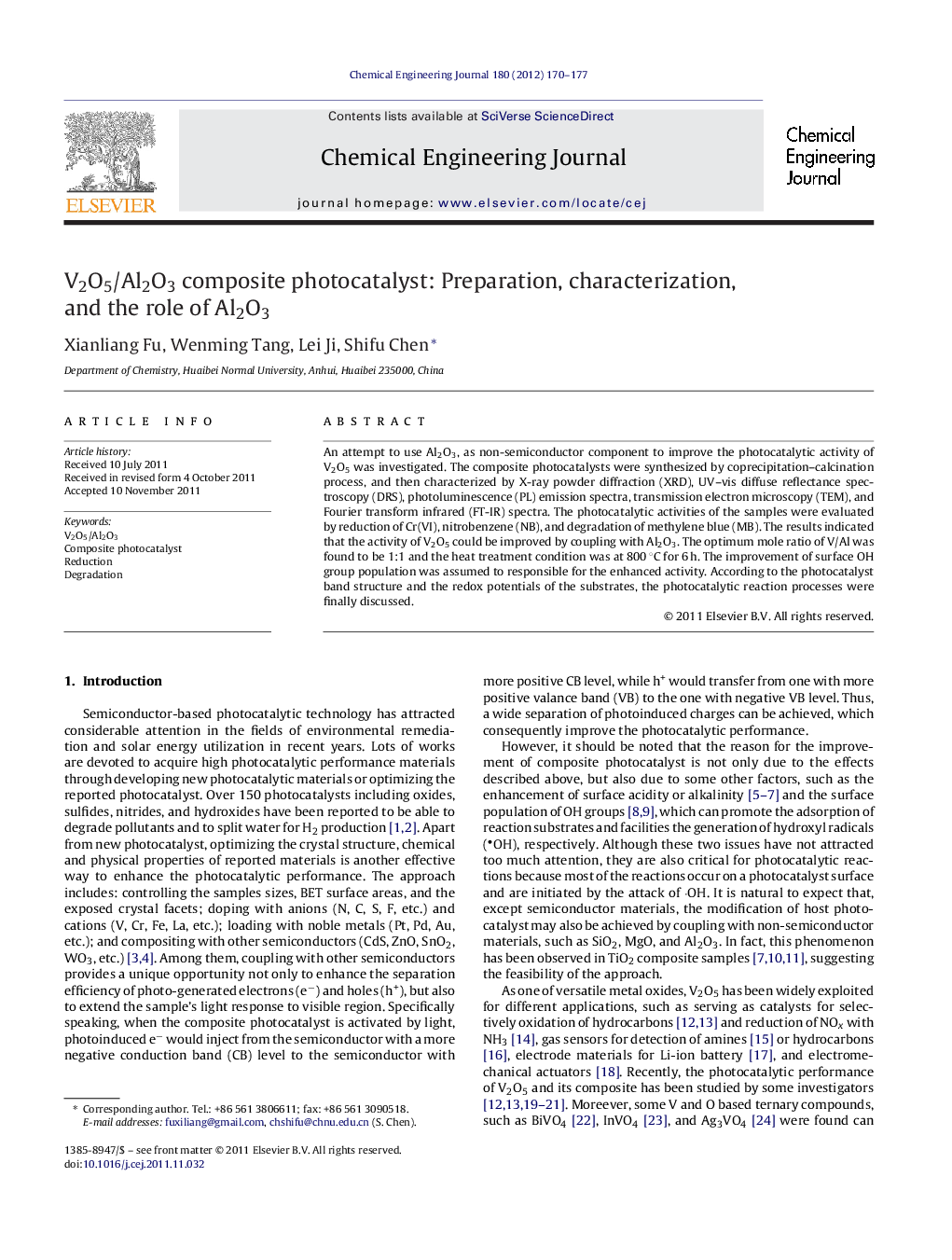| Article ID | Journal | Published Year | Pages | File Type |
|---|---|---|---|---|
| 150363 | Chemical Engineering Journal | 2012 | 8 Pages |
An attempt to use Al2O3, as non-semiconductor component to improve the photocatalytic activity of V2O5 was investigated. The composite photocatalysts were synthesized by coprecipitation–calcination process, and then characterized by X-ray powder diffraction (XRD), UV–vis diffuse reflectance spectroscopy (DRS), photoluminescence (PL) emission spectra, transmission electron microscopy (TEM), and Fourier transform infrared (FT-IR) spectra. The photocatalytic activities of the samples were evaluated by reduction of Cr(VI), nitrobenzene (NB), and degradation of methylene blue (MB). The results indicated that the activity of V2O5 could be improved by coupling with Al2O3. The optimum mole ratio of V/Al was found to be 1:1 and the heat treatment condition was at 800 °C for 6 h. The improvement of surface OH group population was assumed to responsible for the enhanced activity. According to the photocatalyst band structure and the redox potentials of the substrates, the photocatalytic reaction processes were finally discussed.
► Non-semiconductor component of Al2O3 can improve the photocatalytic activity of V2O5. ► The enhanced activity ascribed to the improvement of surface OH groups. ► The optimum V/Al ratio was found to be 1:1, and the optimum heat treatment was at 800 °C for 6 h. ► Alcohol radicals were supposed to be the reducing agents for the reduction of nitrobenzene.
